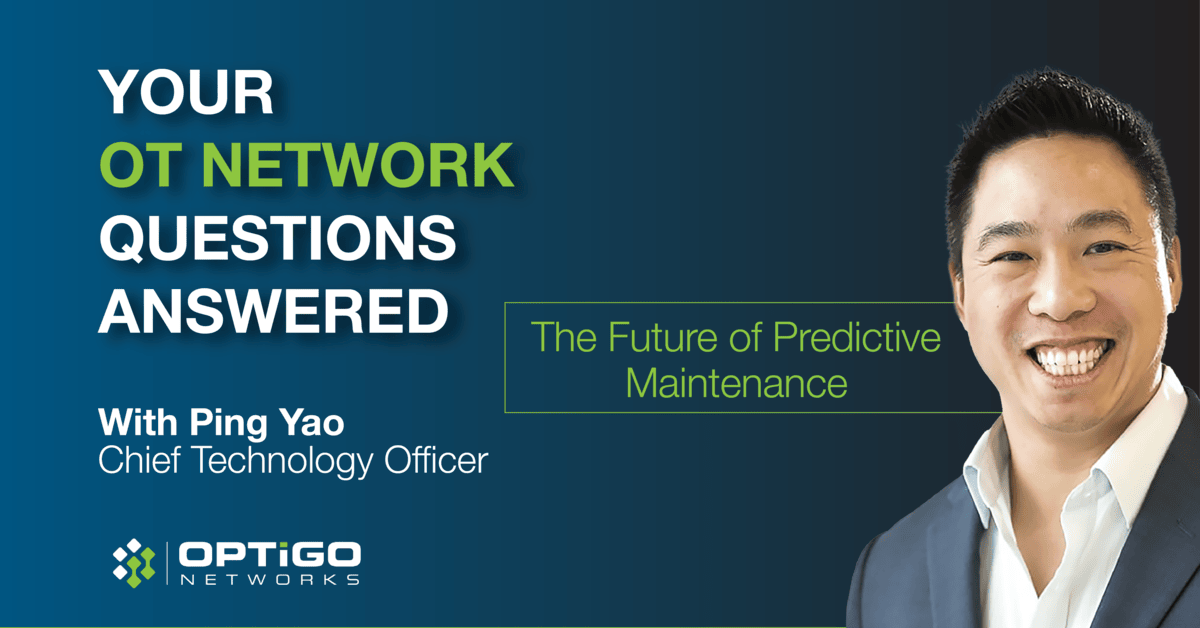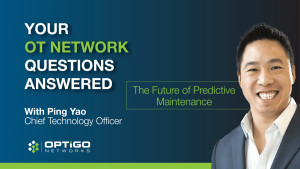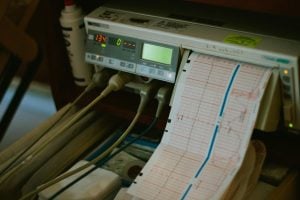You sent us a ton of thoughtful questions about OT networks and BACnet—thank you! In our newest Q&A episode, Optigo Networks’ Co‑Founder and CTO, Ping‑Pook Yao, digs into what data really matters for predictive maintenance, where AI fits today, and how edge analytics can help catch issues earlier.
In this latest episode of Your BACnet Questions, Answered, Ping dives into some of the biggest topics in building automation today: predictive maintenance, anomaly detection with AI/ML, the role of edge analytics, and the importance of boring (but powerful) metrics like broadcast traffic.
Stay tuned… there’s a lot more coming.
Thanks for sending in all your questions! If you’d like us to tackle a particular topic—maybe about broadcast behavior, MS/TP chain length, or network segmentation—send them our way. We love digging deep to help make your BACnet/OT networks more reliable.
Send us a message on LinkedIn, Reddit, or Bluesky, or email us at marketing@optigo.net .
Here’s what Ping covers in Episode 7:
From Broadcast Traffic to Predictive Analytics
One standout moment from the Q&A? Ping’s emphasis on just how insightful simple historical metrics can be when you’re trying to stay ahead of network issues. Broadcast traffic, for example, may not sound exciting—but it can offer a clear warning sign that your BACnet/IP system is heading for trouble.
He also touched on the importance of knowing what devices are connected to your network. Whether you’re thinking about performance or security, device growth trends can tell you when it’s time to rethink your network architecture.
AI and Anomaly Detection: Helpful, but Handle with Care
Can AI and machine learning help catch network anomalies before they become big problems? Ping says yes—but with caution.
While these tools offer huge potential, they still need strong guardrails. False positives and bad training data can cause more noise than insight, so AI is best used alongside proven monitoring practices.
Edge Analytics: Don’t Wait for the BMS to Tell You Something’s Wrong
Ping also answered a question about detecting HVAC inefficiencies before the building management system (BMS) does. His answer? Edge analytics plays a major role.
Catching problems at the switch or field device level means you’re solving issues before they escalate—saving time, money, and potential system downtime. Whether it’s old equipment behaving erratically or misconfigurations introduced by human error, early detection matters.
What’s Next for Optigo?
We couldn’t wrap things up without a glimpse into the future. While Ping kept things close to the chest, he hinted at some exciting AI-related developments coming to the OptigoVN platform in the next year or two. The goal? Real improvements—not AI for AI’s sake, but capabilities that truly add value for customers.
Transcript
Question 1: What types of historical network data are the most helpful for predictive maintenance capabilities in building automation systems?
When we talk about network data, there’s obviously a very, very rich, very huge amount of data from the source address, the destination address, to the rate of traffic, to the type of messages, to the equipment used to communicate across the network. So a lot of information, and you can easily turn into information overload.
You want to keep a little bit more than what you’re using so that you have some room for growth. That’s my philosophy some of the data I look at a lot when I’m trying to kind of profile how a system has changed over time? There’s some simple ones the amount of broadcast
It’s a very simple metric. It’s boring
But it’s very revealing especially a BACnet system where you don’t watch it, it tends to have a lot more broadcast traffic than you want and broadcast traffic is in general quite devastating on system performance. So tracking the amount of broadcast traffic as a basic metric can give you some indication of how the system is growing and is it leading to some problems. The second would be
What devices are connected. If you’re in the world of cybersecurity, you need to know what you have. But even just in the world of operations, if you have a thousand device today and you have a thousand one hundred device tomorrow, and then you trend towards five thousand, you might want to use that to take a moment and re-architect your BBMDs, your routers and so on. The last one I would say is ⁓ keeping an eye on the BBMDs, foreign devices.
Those are big Achilles heel in terms of BACnet systems. They can be ⁓ easily exploited from a cyber security standpoint. So monitoring the activity, what is communicating with the BBMD, what’s coming in, what’s going out. If you’re able to get that level monitoring can be very, very valuable. And as your broadcast traffic, as the subnets are growing, the BBMD tends to be a
Pretty easy place to look at that growth.
Question 2: How feasible is leveraging AI/ML for anomaly detection within BACnet/IP networks today, and what barriers remain?
Yeah, fantastic question. AI is so prevalent everywhere in our world now. Is it possible to use AI for anomaly detection, specifically in this case around network analytics? The answer is, the short answer is absolutely. It’s definitely ⁓ possible and it’s going to be the future, the near future, I would say, of using artificial intelligence, machine learning.
To look at anomaly detection in network health. However, I should point out that AI ML requires knowing whether it’s right and whether it’s wrong. And based on my experience, there’s a lot of wrong out there. So AI, even with self-learning and self-tuning, it might actually be tuning on the wrong set of data. So I think it definitely can.
Be leveraged today and it will bring value but it will likely still on its own bring a lot of false positives or miss ⁓ issues as we train it and give it more what is right so it can learn from what is right to be able to identify what is wrong.
I’m going to read this question literally. Can predictive analytics reduce significantly emergency costs? And the short answer, in my opinion, is no. Most of the problems we have
Encounter are human errors. So do you really need an advanced predictive analytics to predict human behavior? I think putting in place monitoring old boring what changed when will allow us to catch most of the human errors. Give you an example. networking problem occurs because someone made a change in network and connected two ports that were not supposed to connect
And creates a loop. You can’t predict that outcome, but you can detect that outcome. just normal, boring, continuous monitoring would allow you to catch it and identify that problem and giving you time to fix it before the technician leaves site and it doesn’t become an emergency call.
Question 3: Could predictive analytics significantly reduce emergency maintenance calls, and what would need to happen technologically or organizationally for that to be common practice?
Very often when we think of predictive, we’re thinking of something very, really, really fancy. But actually keeping an eye on old equipment is probably the most valuable ones because they’re more likely to show sign of problems before the newer equipment.
It’s the good old edge computing versus central computing. And there’s many school of thoughts, but in general, they’re all valuable. The more you can do everywhere, the earlier you can catch problems before it rises up to the top. It’s just like human intelligence. If the person at the field can identify a problem, deal with it before the supervisor catches it, before the manager catches it, before the owner catches it, it’s all valuable.
It really just comes down to how do you implement it and what’s the balance, the trade-off between cost and benefit. analytics could be valuable. It might just be more costly.
So in the end, edge analytics on its own absolutely does have benefits. It really just comes down to trade off, Will you use edge analytics or core analytics or a combination of both? They all bring value and it’s what is the best way to achieve your business goals, not focusing on one technology over another.
Question 4: What role can edge analytics at the switch level play in spotting HVAC inefficiencies before the BMS does?
It’s a fantastic question. Maybe I’ll answer the question a little bit differently. where is AI and what’s its place at Optigo Networks I personally have been looking at AI for a long time. I remember playing with AI three, four years ago as a tool to help us write code and it wasn’t very good. It was right, maybe 50 % of the time.
It was helpful for doing some research, but it was mostly wrong. Last year, it was incredible firsthand account of the improvement of AI engines. And now it can help you write code with very little mistakes. Now it becomes what they call prompt engineering, asking the right questions, guiding the AI engine to help you get to where you want to go.
Question 5: What advanced analytics or predictive functionalities are you looking for that aren’t yet fully realized or easily achievable within the Optigo ecosystem, and how would these capabilities fundamentally change your approach to building performance and maintenance?
And so we are looking at AI ⁓ very seriously at Optigo. to transform how we work internally, but also looking at applying it to our product, our software, and provide value to our customers. I can’t say much more than that at this moment. I think it’s gonna be very exciting.
I’m very excited to look at what we can bring to the market in the next 12 months to 24 months. Of course, we wanna make sure we are doing it not just for sake of adding AI, but really actually bringing value to our customers and ourselves






